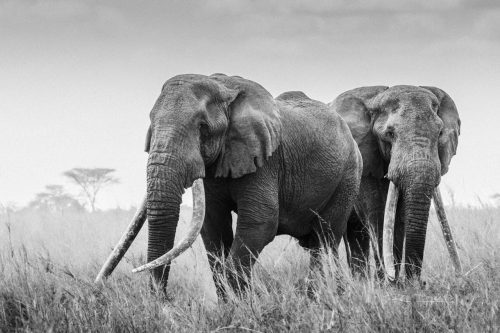
It was February 2010, just a few months after the end of one of the worst droughts Amboseli had ever seen. The vegetation was flourishing thanks to the recent abundant rains and elephants are gathering around Longinye swamp in their hundreds. Among them, many cows in oestrus and bulls following closely behind. The late Super Tusker Tim was certainly the one that stood out; he was clearly the dominant male and the main participant in most of the mating going on at the time.
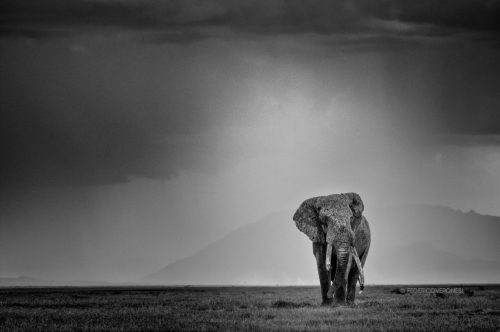
One afternoon, at the fringes of the herds, I came across another amazing bull I hadn’t seen before. One of his tusks, the left one, was long and curved, reaching all the way to the ground while the right was broken. It was Tolstoy, born in 1971, son of Teresia, uncle of Tim and a member of the famous T family, studied since the early 1970s by the Amboseli Elephant Trust.
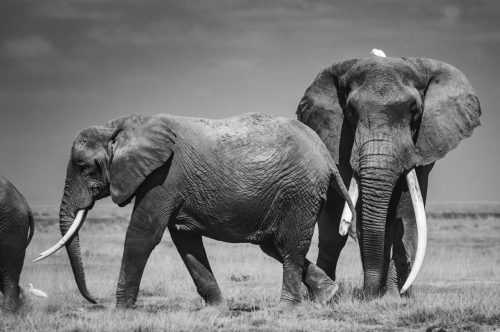
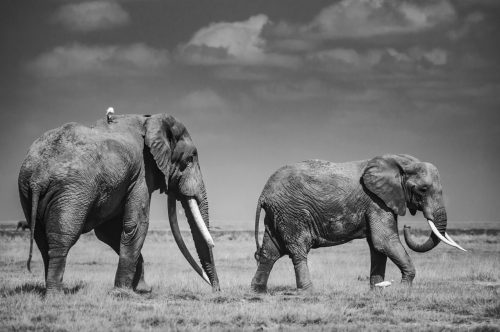
He fed in the marsh until the late afternoon when he came out and walked towards the east, where a cow was being trailed by a group of bulls. Tolstoy attempted to approach the female but a bigger bull faced him with head held high. Tolstoy waved his ears and raised his head too, but he eventually backed off and stayed behind. I watched him walk alone in the plains with a thunderstorm behind, an image still fresh in my mind.
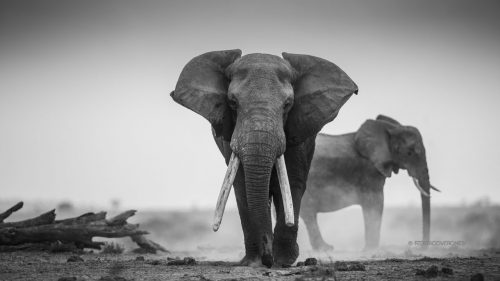
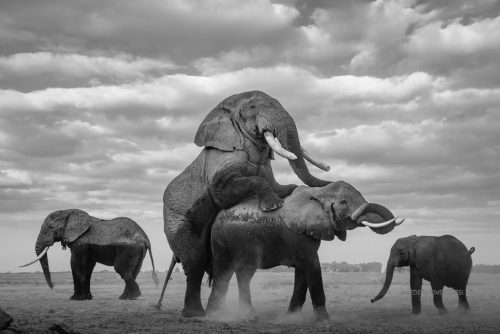
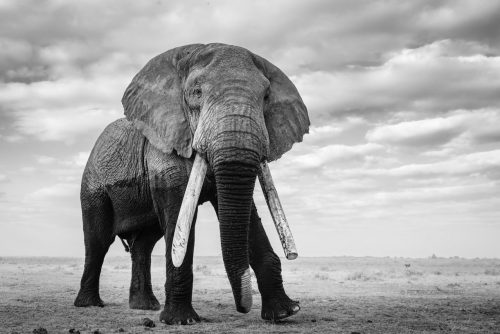
When I saw him in July 2015, he was in musth and spending a lot of time in the west of the park, following and mating with a female. This time, there was something different about him. His right tusk had grown quite a lot but most notably, his left tusk, the very long one, had been trimmed by the Kenya Wildlife Service (KWS), to prevent it from scraping the ground and possibly leaving a trail that could lead poachers to him. His tusks were now approximately of equal length, about halfway to the ground.
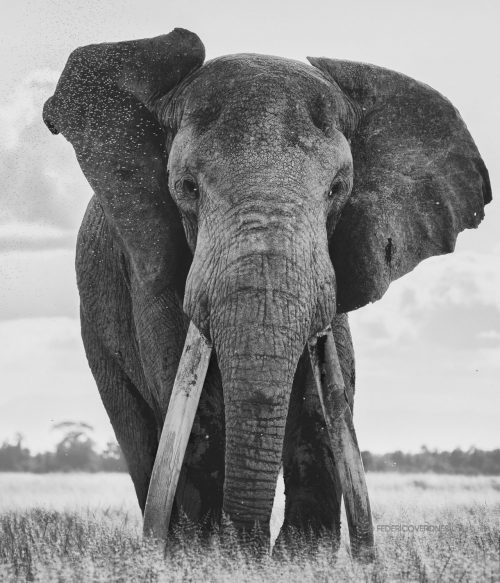
Tolstoy wandered far and wide across the Amboseli ecosystem, of which the National Park is only a very small part. The habitat inside the Park is mostly composed of grasslands and marshes but elephants need to include bushes and trees in their diet, which mostly occur outside the Park. The surrounding woodlands are therefore crucial to the survival of Amboseli’s elephant population.
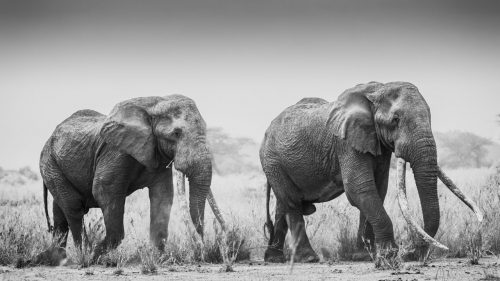
In September 2019, in one of the protected areas outside of the Park, Kimana Sanctuary, I found Tolstoy with his nephew and friend Tim, a real sight to behold watching these two magnificent bulls together, a sight that is becoming increasingly rare in Africa.

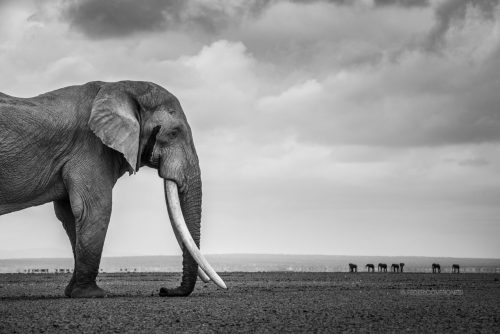
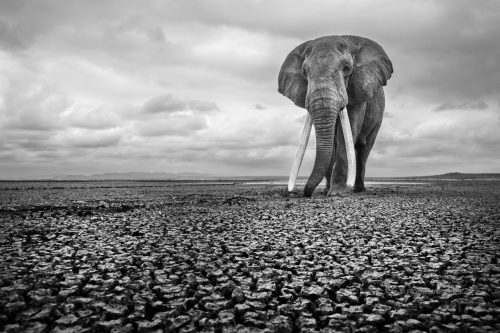
My most memorable sighting dates back to June 2021, when I came across Tolstoy in the magnificent and stark dry Amboseli lake bed. By now his tusks had grown back to reach the ground and he was magnificent. He was with a group of bachelor bulls but he didn’t stick around with them for long, as in the late morning he decided to walk towards the Park alone, following an ancient trail.
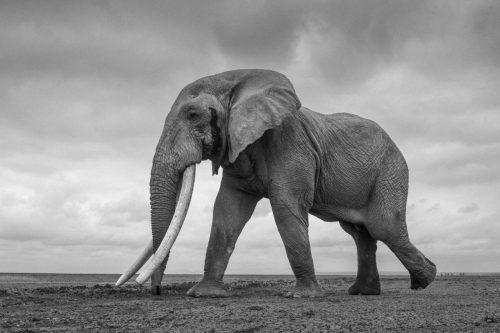
I last saw Tolstoy briefly and from a distance in late February 2022, just a few weeks before his death, in a remote area east of the Kimana Sanctuary, about 50km away from Amboseli National Park. He was resting under a tree with two other big bulls, but as he heard us approaching, he immediately retreated to the thick of the bushes and into rocky terrain. Definitely not the same confident and relaxed elephant he was in the Park or Kimana Sanctuary.
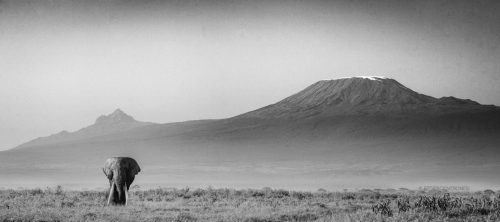
Outside of the protected areas, Tolstoy, like many other bulls developed the habit of raiding the croplands within the Amboseli ecosystem. Farmers obviously don’t want the elephants to destroy their farms and therefore actively chase elephants away using all sorts of methods, including poisoned arrows which can kill an elephant. Rangers from KWS, Big Life Foundation and The Sheldrick Wildlife Trust, have been trying to keep the elephants away from the farms for years, to keep them from getting in trouble. A greatly successful endeavour, as Tolstoy survived until 51 years of age, like his companion Tim. However, complications following an arrow wound, treated by the vets two weeks before his death, eventually took Tolstoy’s glorious life. May his death be a call to action for all stakeholders to preserve the ecosystem surrounding Amboseli National Park.
In the meantime, Tim and Tolstoy will be walking the fields of heaven together once more.
Our marketing team was lucky to spend some time with Tolstoy in Kimana Sanctuary, a place he loved, a week before his passing. We came upon him near the stream, with a few of his mates in the distance and two Big Life rangers watching over him. His entire leg was swollen badly from where he had been speared as a result of his crop-raiding and he was struggling to get some water. We watched in awe as he used his giant tusks as crutches — tucking his head down, placing them in the ground for support and delicately moving his injured leg forward. It was thrilling and harrowing to witness all at the same time. We left him hoping he would pull through and live to be the poster boy for our upcoming camp. Sadly, it was not meant to be. We are working on a way to commemorate him and educate our guests here, where he felt safe.
Filed under: Stories from Amboseli
Subscribe for Weekly Stories
Comments (0):

Tented Suites